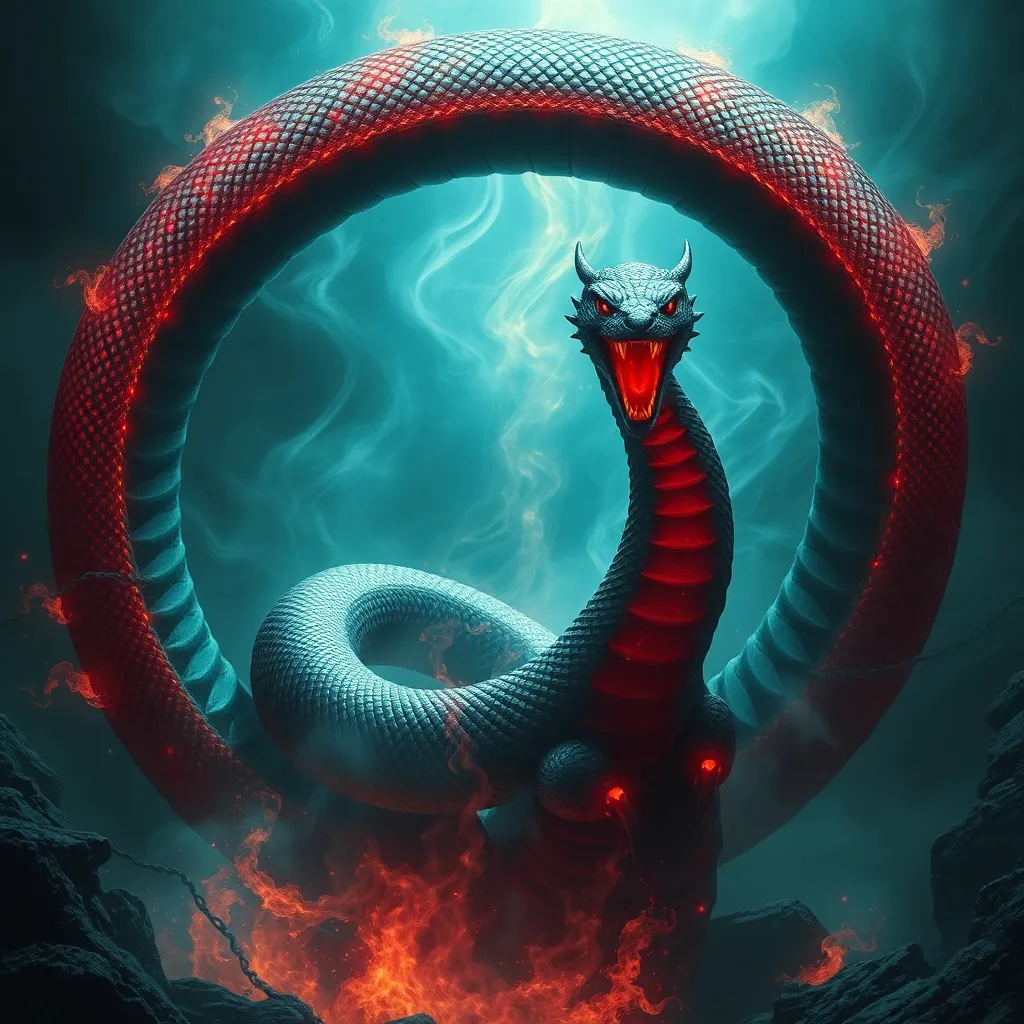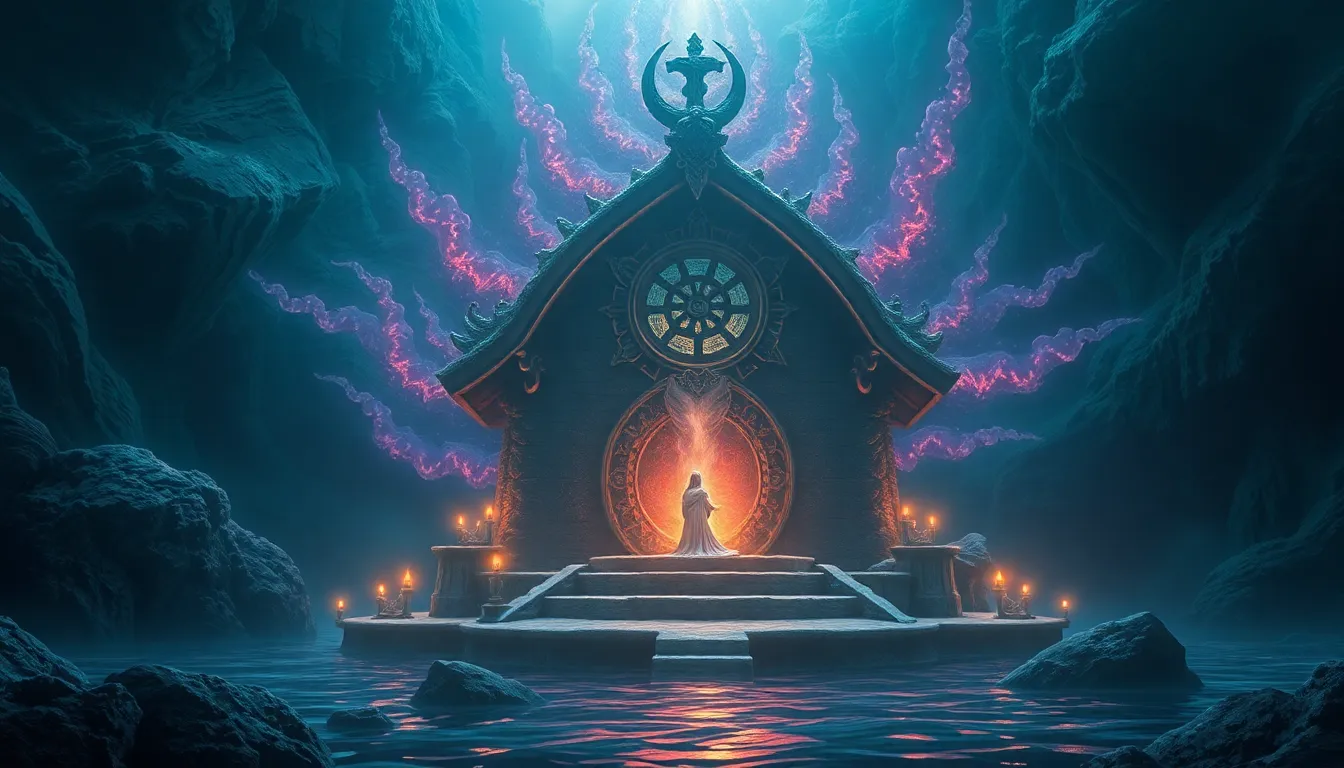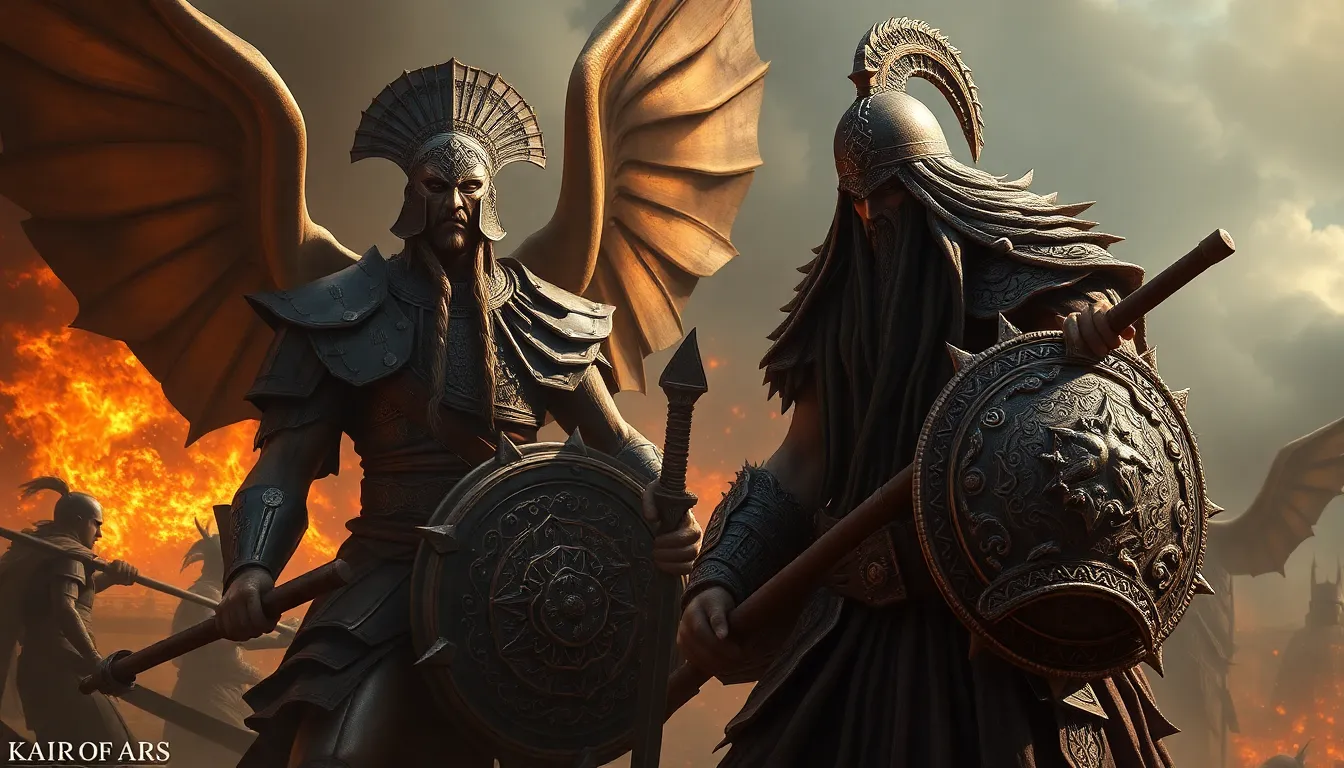The Serpent’s Grip on Hades: Níðhöggr’s Role in Greek Mythology
Introduction: Unraveling the Myths
Níðhöggr, a menacing dragon from Norse mythology, symbolizes the chaotic forces of destruction and decay. This serpent gnaws at the roots of Yggdrasil, the World Tree, representing the cyclical nature of life and death. While Níðhöggr is rooted in Norse traditions, its themes resonate with figures found in Greek mythology, particularly those associated with the underworld. This article explores the multifaceted role of Níðhöggr, examining its significance in both mythologies and the intricate connections that exist between them.
The Origins of Níðhöggr
Níðhöggr is primarily known from Norse texts like the Poetic Edda and the Prose Edda, where it is described as a dragon that dwells beneath Yggdrasil. Its name translates to “the one who strikes with malice,” and it is often depicted as a creature that consumes the dead and gnaws at the roots of the World Tree, contributing to its eventual demise.
In contrast, Greek mythology features serpentine figures such as the Hydra, Python, and Echidna, each embodying chaos and representing the threats faced by heroes. Both mythologies utilize serpents as metaphors for destruction, yet the cultural contexts differ significantly.
- Níðhöggr: A dragon associated with the underworld and the decay of life.
- Greek Serpents: Creatures often defeated by heroes, symbolizing challenges and chaos.
Symbolism of Níðhöggr
The serpent is a powerful symbol across many cultures, often representing chaos, death, and rebirth. In Norse mythology, Níðhöggr embodies these themes by consuming the dead and gnawing at the roots of Yggdrasil, signifying the inevitable decay that leads to rebirth. This cyclical destruction is paralleled in Greek mythology, where serpents often signify the dangers that must be confronted for renewal to occur.
Níðhöggr’s connection to death and the underworld is particularly pronounced. As it feasts on the corpses of the damned, it symbolizes the inescapable nature of death and the decay that follows. This association ties Níðhöggr closely to the themes of mortality found both in Norse and Greek myths.
Níðhöggr’s Role in the Underworld
In the context of Hades, Níðhöggr assumes a unique significance. While Hades is governed by gods such as Hades and Persephone, Níðhöggr represents a chaotic force that exists within the realm of the dead. The interactions between Níðhöggr and Greek deities reveal interesting parallels:
- Hades: The god of the underworld, overseeing the souls of the deceased.
- Persephone: Queen of the underworld, associated with the cycle of life and death.
- Charon: The ferryman who transports souls to the afterlife, ensuring order amidst chaos.
Níðhöggr’s presence in Hades could symbolize the latent chaos that exists within the structure of the afterlife, highlighting the balance between order and disorder.
The Tree of Life and Níðhöggr’s Influence
Yggdrasil serves as the cosmic tree in Norse mythology, connecting all realms of existence. Its roots, which Níðhöggr gnaws at, are essential to the maintenance of life. Similarly, in Greek mythology, trees often symbolize life, knowledge, and the connection between the mortal realm and the divine.
In both mythologies, the concept of a World Tree emphasizes the cyclical nature of existence:
- Yggdrasil: The World Tree whose roots are threatened by Níðhöggr, symbolizing decay.
- Greek Trees: Often featured in myths, representing knowledge and the connection to the divine.
Níðhöggr’s relentless gnawing can be seen as a metaphor for the inevitable decay that leads to new growth, illustrating the intertwined nature of life and death.
Cultural Interpretations and Artistic Representations
Níðhöggr has been depicted in various forms of literature and art throughout the ages. In modern interpretations, Níðhöggr often appears as a formidable adversary, embodying chaos and destruction. Its representation aligns with how serpents are portrayed in Greek art—often as fearsome creatures that heroes must confront.
Some notable representations include:
- Literature: Níðhöggr appears in various retellings of Norse myths, emphasizing its destructive role.
- Art: Sculptures and paintings depict Níðhöggr in battle with gods or as a lurking threat beneath Yggdrasil.
These artistic interpretations highlight the enduring impact of Níðhöggr as a symbol of chaos, drawing parallels with Greek depictions of serpents and other underworld figures.
Lessons from Níðhöggr’s Myth
The myths surrounding Níðhöggr impart valuable lessons about destruction and rebirth. Its role as a harbinger of decay reminds us that destruction is a necessary precursor to renewal. This theme resonates with the moral implications found in both Norse and Greek myths, where the struggle against chaos ultimately leads to growth and transformation.
Key themes include:
- Destruction: Níðhöggr’s actions signify the inevitable decay that all life must face.
- Rebirth: From destruction emerges new life, a recurrent theme in both mythologies.
These lessons encourage reflection on the natural cycles of life and death, urging us to embrace the chaos that accompanies change.
Conclusion: The Legacy of Níðhöggr in Modern Context
Níðhöggr’s legacy endures in contemporary culture, influencing literature, film, and art. Its representation as a force of chaos continues to evoke a sense of both fear and fascination. Understanding Níðhöggr’s role in the broader context of mythology allows us to appreciate the interconnectedness of different cultural narratives.
As we reflect on Níðhöggr and its parallels with Greek mythology, we recognize the importance of these ancient stories in shaping our understanding of life, death, and the cyclical nature of existence. The legacy of Níðhöggr serves as a reminder that even in chaos, there exists the potential for renewal and transformation.



